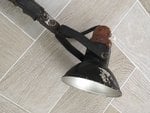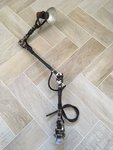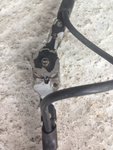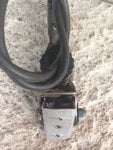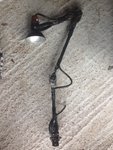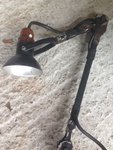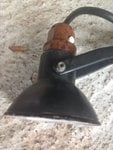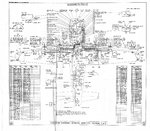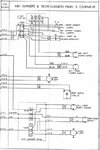Hello everyone - I'm hoping someone can help me identify this adjustable lamp, please? I've been told it was used in the tail turret of an Avro Lancaster, but have been unable to verify elsewhere.
I have found archive photographs of navigators at work, but their adjustable lamps - though similar - have spring-loaded arms, whereas this one's arms are locked in place by a tightening screw.
The shade is original, I'm told, and the switch section is a very distinctive mottled brown bakelite. The part number is 5CX/4856. The name Herbert Terry has been mentioned, as the lamp's designer.
That's all the information I have. If anyone can help me piece facts from that and the photos I'd be very grateful.
I have found archive photographs of navigators at work, but their adjustable lamps - though similar - have spring-loaded arms, whereas this one's arms are locked in place by a tightening screw.
The shade is original, I'm told, and the switch section is a very distinctive mottled brown bakelite. The part number is 5CX/4856. The name Herbert Terry has been mentioned, as the lamp's designer.
That's all the information I have. If anyone can help me piece facts from that and the photos I'd be very grateful.

